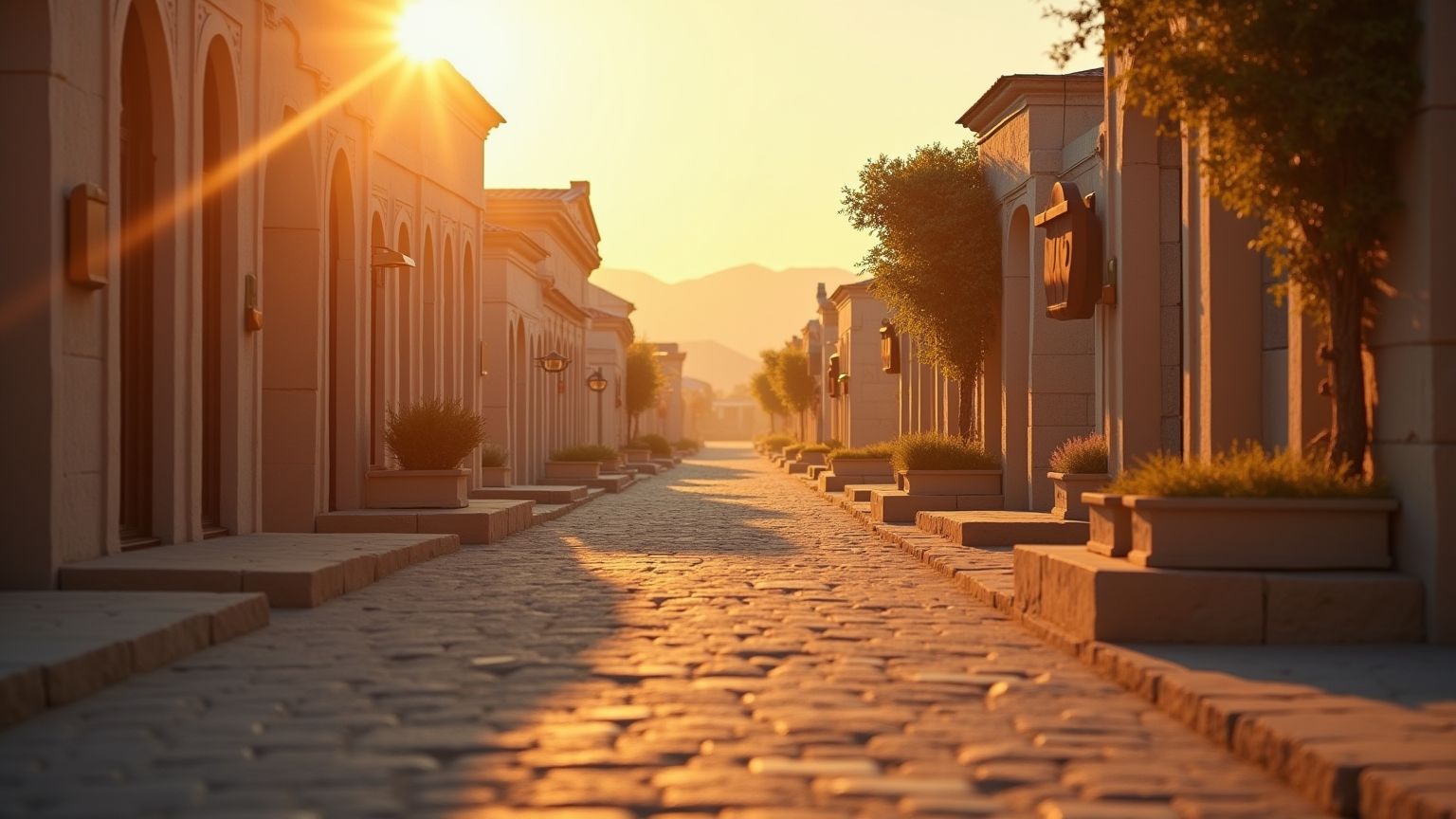Argos Greece: A Journey Through Time in the Peloponnese’s Hidden Gem
After two decades of shepherding wide-eyed visitors through the Peloponnese's winding roads, I've watched countless travelers zoom right past Argos Greece. Their rental cars kick up dust as they rush toward Instagram-famous Nafplio or mythical Mycenae.
Fair enough—those spots shine bright for good reason. But here's my little secret: I've made it something of a personal mission to gently nudge my guests toward Argos Greece instead. This isn't just another dot on the map; we're talking about one of Greece's oldest continuously inhabited settlements where history isn't locked behind museum glass—it's practically elbowing you in the ribs as you walk down the street.
The Ancient City That Time Almost Forgot
Argos Greece isn't just old—it's watch-your-step-or-you-might-trip-over-five-millennia old.
When I'm guiding folks through its sunbaked streets, I often stop abruptly, gesture broadly at the limestone beneath our feet, and ask them to wrap their minds around this mind-bender: humans have been living on this exact patch since roughly 5000 BCE. That's over 7,000 years of continuous habitation—longer than many countries have existed!
The city struts around claiming Europe's longest continuously inhabited settlement title (though a handful of jealous Greek towns mutter disputes under their breath). As a born-and-raised Argive—yep, that's our quirky local moniker—these ancient stones were literally my childhood playground before becoming my bread and butter.
What makes Argos Greece truly special? The seamless dance between ancient and modern. Unlike those velvet-roped archaeological sites, Argos integrates its ruins right into everyday life. That coffee shop? It's built against a 2,500-year-old wall. That parking lot? Sitting atop layers of civilizations. The past isn't some separated attraction—it's your barstool.
Getting to Argos Greece: Your Gateway to the Peloponnese

"How do we actually get to Argos Greece?" That's usually the first question my clients fire at me after I've convinced them to visit. Thankfully, I can report that this hidden gem is surprisingly easy to reach.
• By Air: Fly into Athens International, about 140km northeast. Don't worry—you won't need to channel your inner Icarus from there.
• By Car: My personal favorite! Grab a rental at Athens Airport, hit the highway toward Corinth, gawk at the knife-cut through earth that is the Corinth Canal, then continue toward Tripoli. Watch for the Argos/Nafplio exit. The 1.5-2 hour drive offers sweeping vistas that'll make you want to pull over every five minutes. Plus, having wheels gives you the freedom to explore the region at whim.
• By Bus: KTEL buses regularly depart Athens' Kifissos Terminal for Argos Greece. The air-conditioned journey takes about 2 hours, depositing you right in the town center. Look for the blue-and-white coaches—they're as reliable as Greek grandmothers' cooking.
• By Train: Technically possible, but service is spotty. Stick to rubber on road unless you're a dedicated rail enthusiast.
• From Nafplio: Already living it up in nearby Nafplio? You're practically neighbors! Just 12km separates these historical siblings, with local buses zipping between them every 20-30 minutes. A taxi will get you there faster than you can say "Argos Greece."
Where to Stay: From Traditional Guesthouses to Modern Comfort
Accommodation in Argos Greece doesn't feature infinity pools overlooking the Aegean or boutique hotels charging astronomical rates—and honestly, that's part of its unpolished charm.
For the real-deal Greek experience, I steer my groups toward family-run guesthouses tucked in the old town. Pension Marianna near the plateia (central square) offers rooms that won't win design awards but will win your heart when the owner, Kyria Maria, practically adopts you. Don't be surprised if she invites you to join her family for afternoon coffee or sends you off with homemade pastries.
Craving more modern comforts? Hotel Apollon sits just beyond the town limits, offering swimming pool relief from the merciless summer sun and rooms with functioning air conditioning (trust me, not a given everywhere in Greece). For longer-term visitors, several Argive families rent apartments through booking platforms—perfect if you fancy playing house in Argos Greece and shopping at local markets.
The beautiful trade-off: what Argos lacks in luxury, it makes up for in authenticity and wallet-friendly prices. You'll pay nearly half what you would in tourist-saturated spots, leaving more euros for those extra bottles of local wine.
Historical Wonders: Walking Through Millennia
My walking tours of Argos Greece typically kick off at the ancient theater—an acoustic marvel that could seat 20,000 spectators (more than most modern Broadway venues). Built in the 3rd century BCE and later expanded during Rome's heyday, this stunning semicircle hosted everything from Euripides' latest tearjerker to musical competitions.
Unlike many ancient sites where stern-faced guards keep you at a disappointing distance, here you can plop down on the very same stone seats where toga-clad audiences once sat. Close your eyes on a quiet afternoon, and the whispers of the past feel unnervingly close. Summer visitors might even catch a contemporary performance—there's something magical about watching Greek tragedy performed exactly where it was meant to be seen, with Argos Greece stretching out below.
Just a stone's throw from the theater sprawls the Ancient Agora—once the bustling heart of civic life. This archaeological layer cake includes:
• Roman baths where ancient gossip flowed as freely as the water
• Temple remains where citizens once made offerings to temperamental gods
• Residential quarters where everyday Argives lived, loved, and argued about politics
What I love pointing out to visitors are the visible historical strata—Mycenaean foundations supporting Classical Greek columns topped with Roman arches, all capped with Byzantine additions. It's like someone built a timeline you can touch.
Dominating the skyline is the imposing Larissa Castle, perched atop a 289-meter hill like a crown on Argos Greece. The climb is sweaty business (bring water!), but the panoramic payoff makes every labored breath worthwhile. From this eagle's nest, the entire Argolic plain unfurls before you—olive groves and citrus orchards stretching toward the distant shimmer of the sea. While today's fortress features mainly Byzantine and Venetian architecture, people have been fortifying this hill since before writing existed.
Don't miss the Archaeological Museum of Argos Greece, housed in a neoclassical building near the center. Their Mycenaean jewelry collection never fails to astonish—the delicate goldwork created over three millennia ago looks like it could be displayed in today's high-end boutiques. How they achieved such precision without modern tools remains mind-boggling.
The often-overlooked Byzantine Museum deserves your attention too. Housed in a converted archontiko (mansion), it showcases religious icons and artifacts that illustrate how Christianity merged with Greek cultural traditions to create something uniquely Byzantine.
Beyond the Ancient: Contemporary Argos
While history might lure you to Argos Greece, the living, breathing modern city deserves equal billing. Wednesday and Saturday mornings transform the center into a vibrant open-air market that would make any foodie weak at the knees.
This laiki agora isn't some tourist trap selling mass-produced "authentic" souvenirs. It's where locals haggle over the season's best produce, and farmers from the surrounding villages proudly display their harvests. The explosion of colors and scents—mounds of glossy purple eggplants, heaps of fragrant oregano, and trees' worth of citrus—showcases why the Argolic plain has been an agricultural powerhouse since antiquity.
Plateia Agios Petros serves as Argos Greece's communal living room. This tree-shaded square hums with locals engaged in Greece's unofficial national sport: animated conversation over impossibly small cups of coffee. Join them at Café Elliniko, where the traditional Greek coffee comes properly served with a glass of cold water and usually a complimentary loukoumi (Turkish delight). There's an unspoken etiquette here—the coffee is meant to be sipped slowly while discussing everything from soccer to national politics with escalating passion.
For meals that will have you writing poetic postcards home, skip the places with tourist menus and pictures of food. Instead, head to family-run tavernas like Geitonas or To Steki tou Nikou, where the menu might be verbal or scribbled on a chalkboard. Order local specialties that showcase Argos Greece's agricultural bounty:
• Sofrito – sliced veal bathed in vinegar and garlic sauce
• Pork with celery avgolemono – a silky egg-lemon sauce that's simultaneously rich and bright
• Horta – foraged wild greens drizzled with local olive oil and lemon
• Anything featuring the legendary Nemean wine from vineyards just up the road
Seasonal Celebrations: Timing Your Visit
Argos Greece moves to the ancient rhythms of agricultural cycles and religious calendars that have structured life here for centuries. Time your visit right, and you might witness celebrations that few tourists ever see.
If you're lucky enough to experience Greek Orthodox Easter in Argos, prepare for sensory overload. The Holy Week processions transform the city—candlelit epitáphios (funeral bier) processions on Friday night, followed by Saturday's midnight resurrection celebration when "Christos Anesti" (Christ is Risen) rings through the streets. The darkness suddenly explodes with light, fireworks streak the sky, and everyone—strangers included—exchanges the ritual kiss of peace. By 2 AM, tavernas fill with families breaking their Lenten fast with mayiritsa soup and red-dyed eggs.
Early September brings the Feast of the Panagia (Virgin Mary), when Argos Greece throws off its usual restraint. The normally sleepy streets fill with traditional music, impromptu dancing, and food stalls selling everything from souvlaki to loukoumades (honey-drenched dough puffs). Local winemakers showcase their newest vintages, and craftspeople display traditional wares.
Summer brings various cultural happenings to the ancient theater—from classical performances to film screenings under the star-scattered Argive sky. There's something utterly magical about watching Cinema Paradiso with the ruins of Argos Greece silhouetted against the night.
For agricultural enthusiasts, November's olive harvest offers a glimpse into traditions essentially unchanged for generations. Several local producers welcome visitors to witness (sometimes even participate in) the gathering and pressing process. The fresh, unfiltered oil—emerald green and peppery enough to make you cough—bears no resemblance to the supermarket stuff back home.
Day Trips From Argos: The Perfect Base for Exploration
One of Argos Greece's greatest assets is its central location. I often recommend using it as a base for exploring the northeastern Peloponnese's treasures, returning each evening to Argive hospitality rather than changing hotels every night.
• Mycenae (15km): The legendary citadel of Agamemnon looks like something giants built. Its massive Lion Gate and beehive tombs showcase a Bronze Age civilization so advanced and mysterious it later seemed supernatural to Classical Greeks. The site whispers with ancient power—stand inside the massive Cyclopean walls and feel 3,500 years of history pressing down.
• Nafplio (12km): Greece's first post-independence capital oozes romance from every Venetian balcony and bougainvillea-draped alley. The 999-step climb (I've counted—it's actually 857) to Palamidi fortress rewards with jaw-dropping views. After Argos Greece's authentic earthiness, Nafplio's polished beauty offers pleasing contrast.
• Ancient Nemea (20km): Home to games that rivaled the Olympics and a beautifully preserved temple of Zeus. The archaeological museum houses artifacts from the sanctuary, including starting blocks from the ancient stadium. The surrounding countryside produces Greece's premier red wines from the Agiorgitiko grape—vineyard tours and tastings offer liquid history lessons.
• Epidaurus (30km): The ancient healing center's theater boasts acoustics so perfect you can hear a whisper from the top row—literally. Drop a pin center-stage and listen to it ping throughout the 14,000-seat theater. Time your visit for the annual summer festival to experience Greek drama in its intended venue.
• Tiryns (7km): Another Mycenaean marvel with walls so massive Homer called them "Cyclopean"—supposedly built by the one-eyed giants themselves. Less visited than Mycenae but equally impressive.
• Argolic beaches: The coastline from Nea Kios to Vivari offers numerous beaches with crystalline waters. Unlike the Instagram-famous beaches of the islands, these shores remain refreshingly uncrowded. Locals favor Kastraki Beach for its clear water and Mili Beach for its scenic location beside a medieval castle.
Practical Tips From a Local Guide
After two decades introducing folks to Argos Greece, I've gathered some insider knowledge worth sharing:
• Weather wisdom: Imagine standing in an ancient theater with zero shade when the thermometer hits 40°C/104°F. Not fun. The summer months (June-August) can be brutally hot, especially when exploring exposed archaeological sites. May, September, and October offer sunshine without the scorching temperatures.
• Timing is everything: Archaeological sites typically operate from 8 AM to 3 PM in winter and until 8 PM in summer. However, the Ancient Theater and parts of Larissa Castle remain accessible without time restrictions—perfect for catching sunset over Argos Greece.
• Getting around: While blue-and-white KTEL buses connect major sites, having your own wheels provides freedom. Taxis are available but not abundant—save the number of a reliable driver in your phone.
• Speak like a local: Greeks light up when visitors attempt even mangled versions of their language. Arm yourself with: "Kalimera" (good morning), "Efharisto" (thank you), and the all-important "Yamas!" (cheers). Ask me "Pou ine to theatro?" (Where is the theater?) and I'll not only provide directions but probably walk you there myself.
• Money matters: While card acceptance has improved dramatically, smaller tavernas and family shops in Argos Greece might still be cash-only operations. ATMs are available in the center, but having a euro stash prevents awkward moments.
• Stay hydrated: Argos's tap water is perfectly safe, but the summer heat demands constant hydration. Carry a refillable bottle—the environment and your kidneys will thank you.
Embracing the Authentic Greek Experience
What elevates Argos Greece above more famous destinations isn't just its archaeological wonders but the profound authenticity of a place that exists primarily for its residents rather than tourists.
In Argos, traditions continue not as performances for visitors but as the natural rhythm of local life. The elderly men who gather at the kafeneio (traditional coffee shop) to debate politics have been meeting at the same tables for decades. The woman selling herbs at the market learned which plants to gather from her grandmother, who learned from hers.
When my tour groups express astonishment at having an entire ancient theater to themselves in Argos Greece—no lines, no crowds, no selfie sticks—I remind them this is precisely what makes the experience magical. You can sit in contemplative silence in a 2,300-year-old theater, explore an ancient marketplace without jostling crowds, and engage with locals who see you as a welcome guest rather than a walking wallet.
Argos won't seduce you with luxury spas or trendy cocktail bars. What it offers instead is increasingly rare: a chance to experience a place where history isn't commodified but simply exists as the foundation beneath your feet. Here, in Argos Greece, the past and present aren't separated by museum glass—they're having coffee together at the next table.
Whether you spend a day exploring its ruins or make it your base for a deeper Peloponnesian adventure, Argos offers layers of discovery that reward the curious traveler. As we say in these parts, "Kalo Taxidi"—good journey—to this ancient city where millennia of stories wait just beneath the surface, ready to be heard by those willing to listen.








